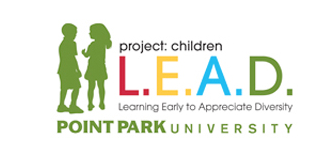Lesson 4 Using Words to Work Things Out Lesson Series

Curriculum | Resources | Workshops | Activities | About Us
Using Words to Work Things Out
Teacher:Eleanor Vistein
Project Children L.E.A.D. Director: Dr. Vincenne Revilla Beltran
Subject Area: Diversity
Grade level: Kindergarten (Ages 5-6)
Length of Lesson: 60 minutes
Learning goals based on Pennsylvania Academic Standards, N.A.E.Y.C. Standards or Early Childhood Learning Continuum Indicators: The children will build conflict resolution skills by participating in an activity that engages them in problem solving strategies.
Arts and Humanities
9.1. E. Demonstrate the ability to define objects, express emotions, illustrate an action or relate an experience through creation of works in the arts.
Language Arts
1.3. A. Respond to and discuss a variety of literature through read-alouds and shared reading.
1.3. B. Describe the characters, setting and main idea of a story.
1.6. A.
-
Listen to others when they are speaking and demonstrate understanding of the message.
-
Ask questions to obtain clarifying information.
-
Listen to a selection of literature.
-
Listen to a selection and connect similar experiences to real life experiences.
Health, Safety, and Physical Education
10.3.3. C. Recognize conflict situations and identify strategies to avoid or resolve.
-
I-statements
-
Adult intervention
OBJECTIVES: After listening to the story, the children will be able to identify what the problem in the story was and how the children resolved the problem. Children will create puppets to re-enact the story. Given a scenario the children will provide dialogue to avoid or resolve a conflict using their puppets.
MATERIALS AND EQUIPMENT NEEDED:
-
Book: Zolotow, Charlotte. The Hating Book. HarperTrophy, 1969. ISBN: 0-06-443197-5
-
Various materials to make puppets
-
Scripts for children to use to provide conflict resolution
-
Puppets for modeling conflict resolution
ADAPTATIONS AND ACCOMMODATIONS TO DIFFERENTIATE INSTRUCTION:
Provide varied levels of difficulty in the scripts that children will use with puppets for conflict resolution.
PROCEDURES:
REVIEW: Ask the children if there was ever a time that they wanted another child to play with them, but the child wanted to play with a different child instead. Was there ever a time that another child called you a name? Made fun of you? Wouldn't share with you? Called you names? Ask the children if they were able to solve these problems. If so, how? If not, what did they do?
INTRODUCE: Tell the children you are going to read them a book about two friends who wouldn't talk to each other anymore. This caused problems for them. After I read the story, we will talk about how they solved the problem. Read, The Hating Book.
DEVELOP:
-
Who were the main characters in the story? (Two girls and a mother)
-
Where were the girls when the problem happened? (On the way to school, at school)
-
What was the problem? (She sat by someone else on the bus, she used someone else's pencil when her friend offered to let her use hers, she didn't ask her to help wash the blackboard, she didn't choose her to be on her team)
-
What did the mother tell the girl to do to solve the problem? (Use her words to ask her friend, "Why")
-
How did the girls solve the problem? (They used their words to talk it over.)
-
Tell the children they can use their words to keep problems from happening or to solve them when they do happen. Tell the children you will demonstrate this by using the puppets.
-
Choose two children to be the friends in the story. Have the children reenact what happened on the school bus. Refer to the book if necessary. Demonstrate how an "I" statement could have solved the problem. "I got upset when you didn't sit by me."
-
Choose two different children to be the friends in the story. Have the children reenact what happened in school with the pencils. Refer to the book if necessary. Ask the children if they can think of an "I" statement that the girl could use; if not, provide them with one.
-
Choose two different children to be the friends in the story. Have the children reenact what happened when it was time to wash the blackboard. Ask the children if they can think of an "I" statement that the girl could use to solve the problem; if not, provide them with one.
-
Repeat this procedure for the time she wasn't chosen to be on her friend's team.
-
Tell the children that telling a friend how they feel about a problem can help to prevent or solve the problem. Tell the children that if someone won't listen to their words, they should get an adult to help them solve the problem.
-
Tell the children they are going to make puppets. These puppets will be used to help solve a problem like the problems in the book.
-
Provide children with various materials to make puppets.
-
Have children use the puppets to provide dialogue to solve the problems in the REVIEW section of this lesson plan.
ASSESS: The students will be assessed through observation and anecdotal note taking.
ASSIGN: Provide time for children to use these new skills when real life experiences occur in the classroom.
CLOSE: Tell the children, "Today we learned how to use "I" statements to let people know how we feel when we have a problem. If you have a problem with a friend, talk it over and let them know how you feel.

